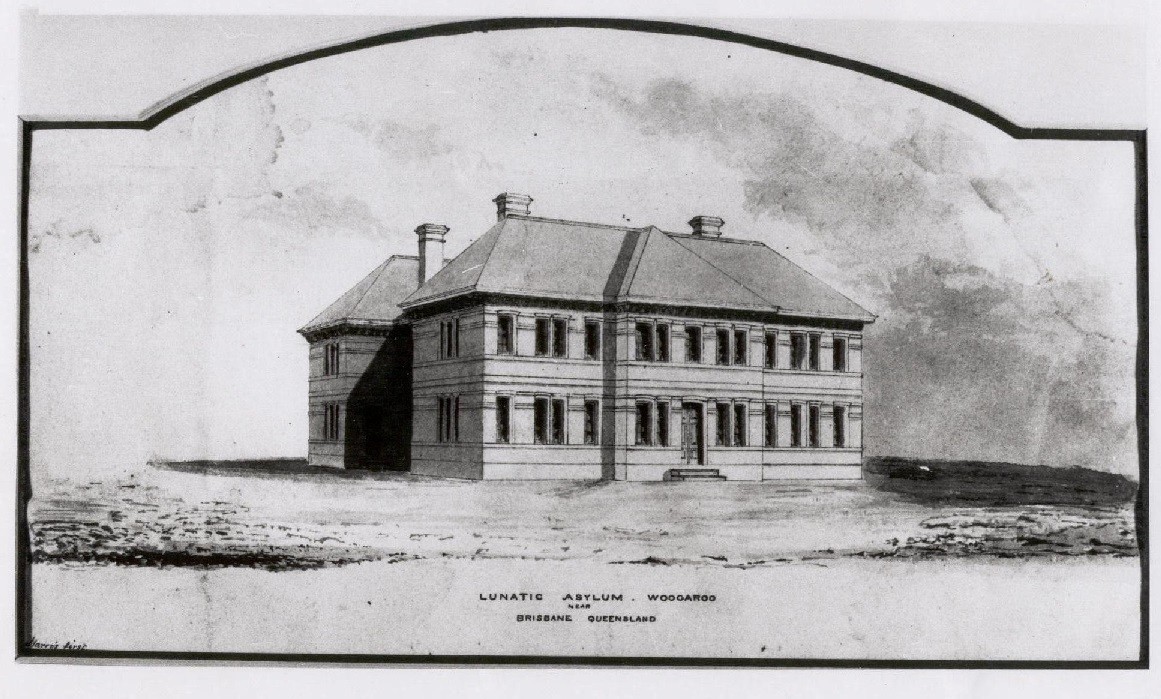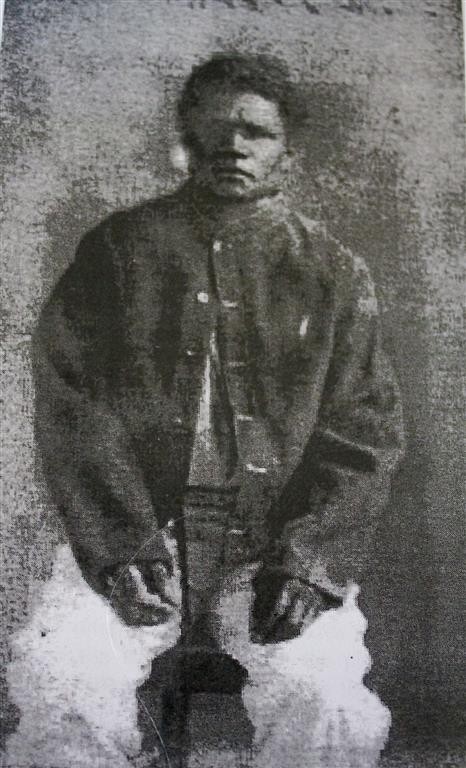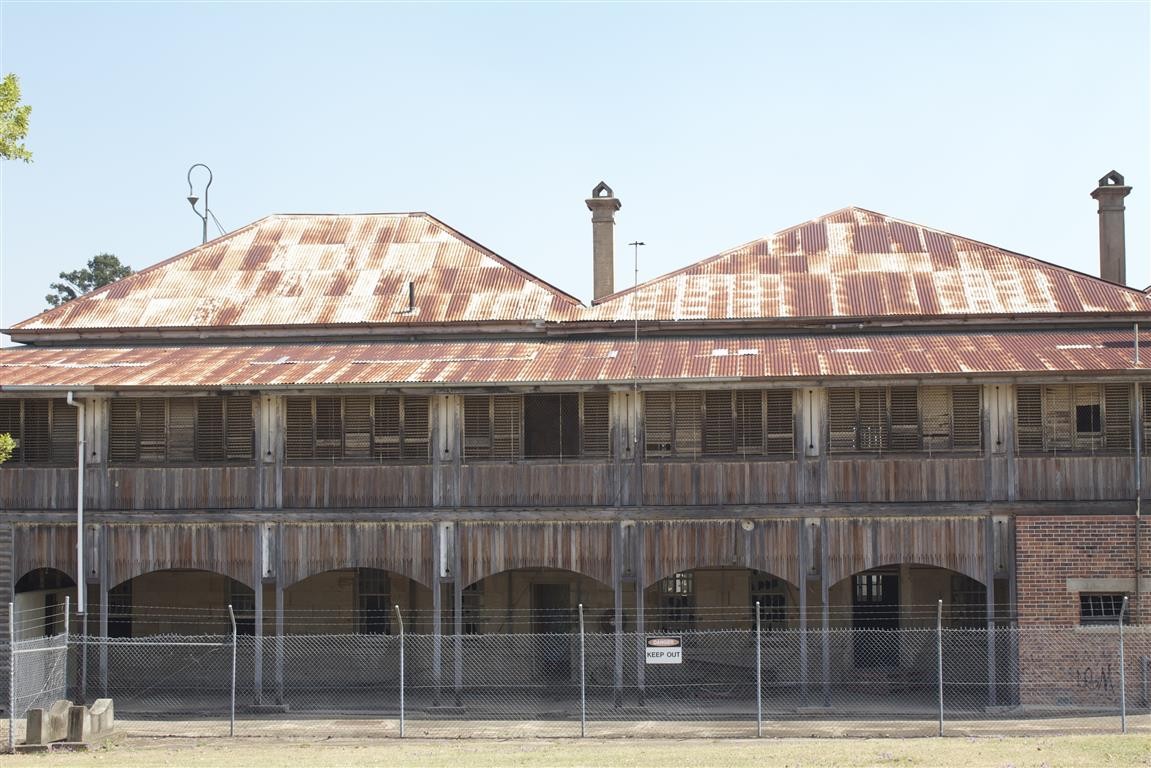
The Don Juan sailed up the Brisbane River in 1863 with the first group of South Sea Islanders (SSI) indentured to Robert Towns for his Townsvale cotton plantation. Shortly before it reached Redbank, where the SSI disembarked, it would have passed the entrance to Woogaroo Creek. In 1865 another ship, the steamer, Settler, sailed up the river to land at Woogaroo Creek with sixty-nine patients for the new Woogaroo Lunatic Asylum. The name of the asylum was changed many times – from Woogaroo to Goodna to the Brisbane Mental Health to Wolston Park. It is now known as The Park Centre for Mental Health.
There are scant records of Islanders in Woogaroo but certainly ‘the strain of indentured life took an emotional as well as physical toll. Some were incarcerated for insanity, and Goodna Asylum near Ipswich received South Sea Islanders from all over Queensland.’ One example of the emotional toll indentured life took is that of shepherds. Islanders, amongst others, worked as shepherds, in the west, on pastoral properties. ‘In 1870, out of 127 male inmates at the Woogaroo Asylum, no fewer than thirty-two had formerly been shepherds.’ I haven’t discovered, as yet, if any of the thirty-two were SSI but it’s safe to say that at some stage Islander shepherds would have been in Woogaroo. ‘Most South Sea Islanders admitted to Goodna Asylum spent a relatively short time there and were sent back to the islands after they were discharged.’

Kelah, 1875 (QSA, Photographic record and description of male prisoner (estray).
There is some information on one particular SSI patient at Woogaroo, Kelah (or Keelah), a young man from Epi Island, who arrived in Maryborough in October 1874. Within a few days of arrival he’d killed another SSI from Santo, Compan. Kelah was sentenced to hang and sent to the old Petrie Terrace gaol in Brisbane. The historian Tracey Banivanua-Mar cites Kelah’s tragic case in the introduction to her Violence and Colonial Dialogue: the Australian-Pacific Indentured Labor Trade. ‘Confined alone in his tiny cell, Kela’s distress and illness concerned even the hardened jail officers’ with his screaming and crying out. Banivanua-Mar points out that he had been in Queensland only a few days during which time the murder occurred, he was tried and convicted, and all without an interpreter. Through the intervention of an anti-slavery campaigner Kelah’s sentence was commuted to life imprisonment.
Kelah’s story is taken up again by local Brisbane historian Christopher Dawson who found that, over the following eight years, Kelah spent time at St Helena Prison and was also admitted to ‘Woogaroo Lunatic Asylum in a state of lunacy, and a few months ago he was returned to the Brisbane Goal as incurable. Some time previous to his death he refused to take food and eventually it was given to him by force.’ Kelah grew steadily sicker and weaker and eventually, in 1882, died of atrophy – ‘ the wasting away or reduction in size of part of the body, and in Kelah’s case was caused by his inactivity and refusal to eat.’ He is buried in Lot 15 at Toowong cemetery along with four other Islanders from old Petrie Terrace gaol.

If any of the SSI had died in the asylum they would have been buried at the cemetery on the site. However, after numerous floods graves, as well as many records, were washed away. Later the graves that were left were dug up and moved to Goodna Cemetery where there are some numbered metal plates and some names recorded.
Patients were transported from all over Queensland in iron chains and handcuffs, riding in ‘lepers van’ attached to a goods train, ‘at night frequently chained to a tree’ . Upon arrival in Brisbane they were sent to the Brisbane Reception House where ‘upon admission, inmates were placed inside a specially constructed shower bath, strapped to the door, which was then locked, and a “very heavy” stream of cold water fell from “very high” upon their heads and shoulders.’ Then, hence, to Woogaroo, usually in the back of the Black Maria police van.
What was life like for mentally ill, including SSI patients, at Woogaroo? In 1865 the Asylum was described as, ‘cramped and bare yards, surrounded by high fences where the “lunatics” were penned.’ A succession of inspectors and superintendants from 1865 until 1909 described it as ‘a condition of things sickening to our common humanity’, in the 1870s ‘wooden boxes called cells of the most offensive and abominable description … they may be called “cages”. In 1909 the Visiting Justice said he’d ‘never seen anything worse in his life’ . The asylum was a prison rather than an asylum.
The Queensland genealogist, Judy Webster, has compiled a list of names from the Goodna Mental Asylum Casebooks 1860-1931, Queensland Public Curators Insanity Files, Queensland Police Gazette etc. There are sixty-three Islander names. I have repeated some names, such as ‘Billy’ and ‘Johnny’, because they may have referred to different people. To access the names use the search box - www.judywebster.com.au. Some files are available and an explanation of how to order and pay for copies is near the bottom of the Web page on which the names appear. These are the names:-
Ah Boo, Albert Noganda, Aleck Norrie, Allah Toreety, Antivien, Johnny Aramunga, Assoo, , Battywoo, Bellawara, Billy, Billy, Billy Barlow, Blissaravie, Blooranta (alias Billie Pentecost), Bob Parma, Bonami, Calbillias (SSI of Nana Lava), Cathethu, Charlie, Charlie Pentecost, Deally, Farringarrie, Fofanna, Gayselumbo, Georgie, Guitilatto, Hero, James Humala,James Murray, Jimmy Chimira, Jimmy Ekie, Jimmy Mow, Johnny, Johnny Malayta, Johnny Sandow, Kallee Bissee, Keelah, Koombie, Lyllye, Manki, Harry Manto, Moses, Moses, Mato, Matt, Oondallie, Otaan, Peter, Poomassi, Rongah, Sam (Solomon islander), Sambo, Schunbo Guy, Serrie, Tabboo, Tofanna, Thomas Danyson, Toby Marate, Tommy Eppie (alias Habey), Quamboolie, Verisdoon, Willie Ambrym, Wombat …
References
. Journey to Sugaropolis: the Australian South Sea Islander story of the Gold Coast Region, City of Gold Coast, 2013, p. 34
. Challinor, Dr H., Woogaroo Asylum Report, V&P.1, 1871, p. 972
. Sugaropolis, op. cit. p.34
. Dawson, C., The Prisoners of Toowong Cemetery: life, death and thr Old petrie Terrace gaol, Inside History for the Boggo Road Gaol Historical Society, 2006, p.34
. Banivanua-Mar, T., Violence and Colonial Dialogue: the Australian- Pacific Indentured Labor Trade, University of Hawai’I Press, Honolulu, 2007, p.1
. Dawson, op .cit., p.33
. Ibid.
. Evans, R., ‘The Hidden Colonists: deviance and social control in colonial Queensland’, in Social Policy in Australia: some perspectives 1901-1975, ed. J. Roe, Cassell, Stanmore, 1976, p. 85
. Ibid.
. Ibid., p.88
Ibid., p.86
Kathleen Mary Fallon - John Oxley Library Fellow, State Library of Queensland
Kathleen Mary Fallon and Matthew Nagas are the 2013 recipients of the John Oxley Library Fellowship, SLQ. Their project is a documentation of Australian South Sea Islanders sites of significance from Tweed to the Torres Strait. Kathleen has, recently, been concentrating on the Brisbane/Ipswich area. There is a plethora of sites all the way up the coast which will be documented for the project.
Comments
Your email address will not be published.
We welcome relevant, respectful comments.